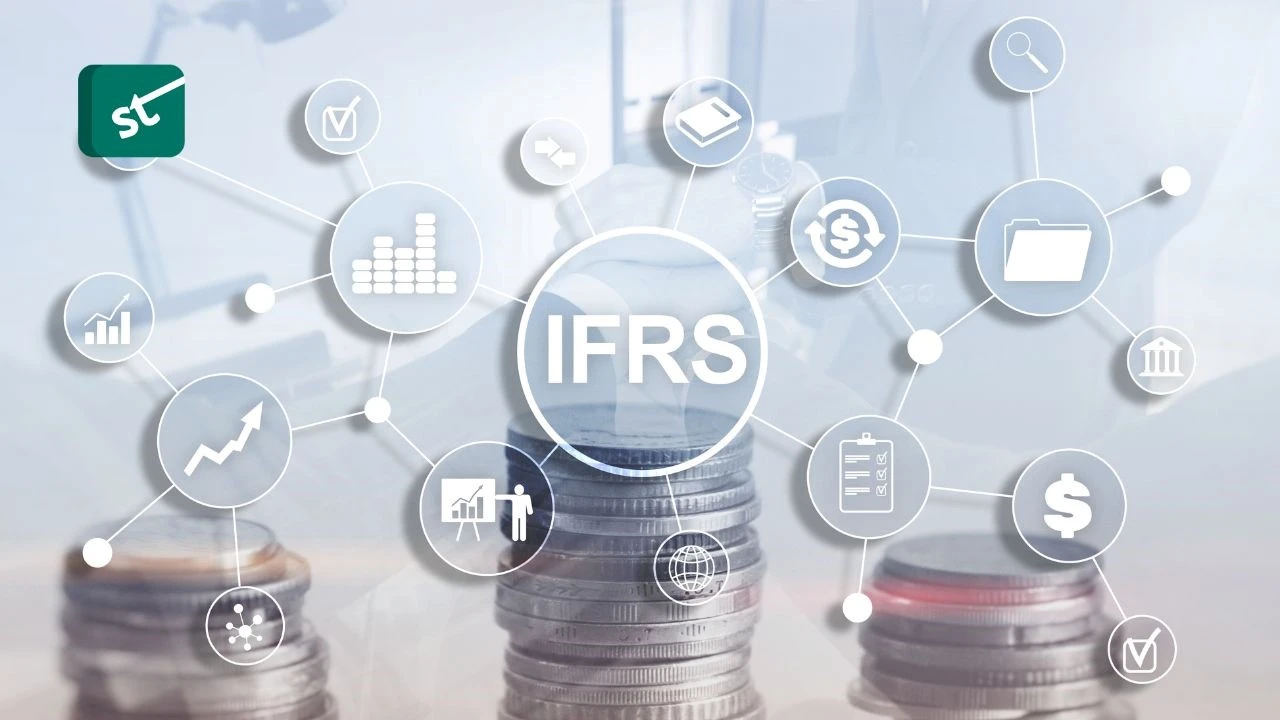In the dynamic world of finance, where fortunes are made, trends shift, and economic landscapes evolve, understanding the current state of the US equity market outlook stands as an imperative for investors and observers alike.
The realm of equity markets serves as a reflection of economic health, investor sentiment, and the intricate interplay of global forces.
As we embark on this journey to explore the US equities outlook, we delve into the crucial task of assessing its present condition and understanding the intricate factors that shape its trajectory.

Importance of Assessing the US Equities Outlook
The importance of comprehending the US equities outlook cannot be overstated. These markets are not only an engine of wealth generation but also a lens through which we view the health and vitality of the broader economy.
Investors, financial professionals, and policymakers rely on the insights gleaned from equity market trends to make informed decisions that impact portfolios, investment strategies, and economic policies.
Moreover, the US equity market outlook can provide early indicators of potential economic shifts. Upward trends may signify consumer confidence, increased business investments, and a general sense of economic optimism.
Conversely, downturns might signal challenges such as market volatility, economic uncertainty, or the anticipation of regulatory changes.
The ability to assess and interpret these signals is essential for staying ahead of market movements.
Brief Overview of Factors Influencing the US Equities Outlook
The US equities outlook is not shaped by a single factor but by an array of variables that intertwine to create market dynamics.
Economic indicators, market performance, geopolitical events, regulatory changes, technological advancements, and expert opinions all contribute to shaping the market’s current and future trajectory.
From the macroeconomic indicators that illuminate the broader economic canvas to the expert perspectives that shed light on potential trends, we embark on a journey that aims to provide a comprehensive understanding of the US equities outlook.
Current Economic Landscape
In the complex dance of market dynamics, the current economic landscape serves as both the stage and the backdrop.
Let’s look into the pivotal role of macroeconomic indicators, employment data, and inflation trends in shaping the US equity market’s present condition and future trajectory.

-
Macroeconomic Indicators Affecting the US Economy
Macroeconomic indicators stand as the compass by which economists, investors, and policymakers navigate the economic terrain.
Indicators like Gross Domestic Product (GDP), consumer spending, and manufacturing activity provide insights into the overall health of the US economy.
As the backbone of the US stock outlook today, these indicators influence investor sentiment, market valuations, and corporate strategies.
-
Employment Data and Its Impact on Consumer Sentiment
Employment data transcends numbers on a spreadsheet; it’s a pulse check on the workforce’s well-being and a barometer of consumer sentiment. Unemployment rates, job creation numbers, and labor force participation rates all offer insights into the job market’s health.
As more people find gainful employment, consumer sentiment often improves, boosting consumer spending and stimulating economic growth.
A thriving job market can bolster equity market performance, as increased consumer spending drives corporate revenues.
Alternatively, rising unemployment can lead to cautious consumer behavior, potentially impacting sectors dependent on consumer expenditure.
-
Inflation Trends and the Federal Reserve’s Response
Inflation, the gradual increase in the price of goods and services, plays a pivotal role in the US investment outlook.
The Federal Reserve closely monitors inflation trends and adjusts monetary policy to maintain price stability and sustainable economic growth.
When inflation is well-contained, it provides a conducive environment for both investors and businesses.
The Federal Reserve’s response to inflation, characterized by changes in interest rates and monetary policies, can significantly impact market behavior.
Rising inflation can lead to speculation about potential interest rate hikes, influencing market sentiment and investor decisions.
In this realm where numbers and economic indicators hold the key to market movements, a nuanced understanding of macroeconomic indicators, employment data, and inflation trends is crucial.
As we move forward, let’s dig deeper into the interplay of these economic elements and their profound influence on the US investment outlook.
Market Performance
As the heartbeat of the financial realm, market performance encapsulates the collective sentiment of investors and the intricate interplay of economic forces.
-
Overview of Recent Performance of Major US Indices
Major US indices – the S&P 500, Nasdaq, and Dow Jones – stand as barometers of market health, reflecting investor optimism, caution, and everything in between.
Examining their recent performance offers insights into prevailing market sentiment.
The S&P 500, composed of 500 leading US companies, provides a broad snapshot of the market’s direction.
A climb in the S&P 500 often signifies widespread positive investor sentiment, while a decline might indicate prevailing uncertainties.
The Nasdaq, known for its tech-heavy composition, often showcases technological innovation’s impact on market trends. It’s a bellwether for sectors like technology, communication, and biotech.
The Dow Jones Industrial Average, composed of 30 blue-chip stocks, provides insight into established industries’ performance.
It’s often viewed as a reflection of broader economic health due to its diverse representation.
Understanding the recent movements of these indices helps decipher whether the market is in a bullish, bearish, or transitional phase, and allows investors to align their strategies accordingly.
-
Analysis of Sector Performance and Its Implications
Beyond the indices lies the intricate web of sectors, each with its unique dynamics and potential impact on the investment outlook.
Sector performance analysis sheds light on where investor interest and corporate growth potential lie.
Certain sectors, like communication services and technology, are driven by innovation and changing consumer behavior.
Others, like consumer staples, are considered defensive and tend to perform consistently even during economic downturns.
Analyzing sector performance offers insights into prevailing market sentiment and can guide investment outlook.
Positive trends in sectors such as healthcare or renewable energy can indicate emerging market leaders, while downturns might signal challenges or oversaturation.
Sector performance is both a reflection of market dynamics and a potential predictor of broader market movements.
It’s a mosaic that investors can piece together to form a comprehensive picture of market sentiment and potential opportunities.
Key Drivers of Market Sentiment
Market sentiment, akin to a compass guiding investors through turbulent waters, is influenced by an interconnected set of factors.
-
Geopolitical Factors Shaping Investor Confidence
The geopolitical landscape serves as a backdrop against which market sentiment unfolds.
Geopolitical events, such as elections, diplomatic shifts, and international conflicts, have a profound impact on investor confidence.
Stability or uncertainty in global affairs can ripple through the equity market. When geopolitical tensions escalate, investors may become cautious, leading to a shift away from riskier assets.
Conversely, periods of relative stability can bolster investor confidence and foster a favorable market environment.
As we explore the equity market’s outlook, understanding how geopolitical factors influence sentiment becomes paramount.
-
Trade Tensions and Global Economic Interplay
Trade tensions and the interplay of global economies are threads intricately woven into the fabric of market sentiment.
International trade agreements, tariffs, and geopolitical negotiations can directly impact multinational companies’ profits and supply chains.
Trade tensions, particularly between major economies, can create uncertainty and market volatility. An escalation in such tensions might lead to a risk-off sentiment, influencing investor behavior and reshaping market dynamics.
Conversely, resolution or positive trade developments can inspire market optimism and drive equity prices upward.
-
Technology Advancements and Their Influence on Specific Sectors
In the age of rapid technological evolution, advancements exert a profound influence on market sentiment.
Technological breakthroughs can reshape industries, disrupt traditional business models, and generate new investment opportunities.

Emerging technologies, such as artificial intelligence, blockchain, and renewable energy innovations, can catalyze shifts within specific sectors.
These advancements offer growth potential but also entail risks if markets become oversaturated or if regulations lag behind technological progress.
Investors keen on harnessing the power of technological advancements need to be attuned to sector-specific trends and the broader implications of innovation.
Understanding how technology can influence market sentiment and sectoral performance equips investors to navigate the market’s evolving landscape.
Regulatory Landscape
Navigating the equity market’s labyrinthine landscape involves understanding the regulatory currents that shape investor sentiment and industry dynamics.
-
Updates on Regulatory Changes and Their Impact on Market Sectors
Regulations are the invisible threads that weave the fabric of market behavior. Regulatory changes can stem from shifts in political landscapes, evolving consumer preferences, or global imperatives.
These changes can impact market sectors in various ways, from altering operational practices to influencing investor sentiment.
For instance, environmental regulations might impact industries reliant on fossil fuels, pushing them toward cleaner alternatives. Financial sector regulations can alter investment strategies and impact asset valuations.
-
Government Policies Affecting Specific Industries (Energy, Healthcare, Finance)
Government policies have the power to both shape and reshape industries. Policies related to energy, healthcare, finance, and more can transform sectoral landscapes.

Subsidies for renewable energy, changes in healthcare regulations, or shifts in financial oversight all influence how industries operate and how investors perceive their potential.
Earnings Season Preview
The crescendo of market movements is often punctuated by earnings season – a period where companies unveil their financial performance.
-
Insight into Upcoming Corporate Earnings Releases
Earnings releases are a window into a company’s financial health and performance. Tracking earnings reports can offer valuable insights into the economy’s strength, industry trends, and company-specific dynamics.
Robust earnings often drive investor optimism, while disappointing results might spark market turbulence.
By anticipating upcoming earnings releases, investors can position themselves to capitalize on market movements driven by company-specific announcements.
-
Expectations and Projections for Various Sectors
Earnings season extends beyond individual companies; it offers a panoramic view of sectoral performance. Analysts’ expectations and projections for various sectors provide a lens through which investors can gauge industry trends.
For instance, strong earnings projections in technology sectors might indicate continued innovation and growth.
In contrast, tempered expectations might suggest a more cautious outlook. These projections, combined with macroeconomic indicators and market sentiment, offer a comprehensive view of sectoral health.
Regulatory changes and government policies mold industry landscapes, while earnings season unveils the financial stories of companies and sectors.
Analyst and Expert Opinions
The equity market’s terrain is illuminated by the wisdom and insights of analysts and experts who decipher its nuances.
-
Compilation of Insights from Market Analysts and Experts
Analysts and experts, armed with data and experience, offer a unique vantage point on market dynamics.
Their analyses dissect trends, anticipate shifts, and project potential outcomes. By compiling their insights, investors gain a comprehensive overview of the market’s evolving landscape.
These experts often dissect macroeconomic indicators and sectoral performance, and consider geopolitical influences. Their analyses can range from short-term projections to long-term trends, offering a mosaic of perspectives that investors can leverage to refine their strategies.
-
Diverse Viewpoints on Potential Market Trends and Opportunities
The beauty of the equity market lies in its diversity – not only in the array of industries but also in the myriad of viewpoints that shape market sentiment. Diverse perspectives offer a tapestry of potential trends and opportunities that might be overlooked in a singular viewpoint.
Some experts might foresee technology sectors continuing their upward trajectory, while others might highlight the resurgence of traditional industries.
By exploring these viewpoints, you can gain a more comprehensive understanding of potential market movements and the range of opportunities available.
Investor Strategies
Investing in the equity market necessitates a strategic approach tailored to the prevailing market environment.
-
Highlighting Different Investment Strategies for the Current Market Environment
Different market conditions call for distinct strategies. Whether it’s a bullish or bearish market, investors can consider strategies like growth investing, value investing, or dividend investing.
Adapting strategies to market realities enhances the potential for success.
-
Considerations for Long-Term Investors vs. Short-Term Traders
Long-term investors and short-term traders each play unique roles in the equity market. Long-term investors seek sustained growth, while short-term traders capitalize on market volatility
US Stock Market Outlook 2023
Following a reasonably steady yet uneven performance of stocks from January to June’s 2023 conclusion, the US Stock Market Outlook 2023 maintains a mild bullish sentiment.
Impressive strides in tech stocks, including heavyweights like Microsoft (MSFT) in cloud computing and generative AI and Oracle (ORCL) in enterprise database software turnaround, as well as relatively recent entrants like Palantir Technologies (PLTR), have ignited enthusiasm among investors.
Observing the stock market’s trajectory in recent months, it becomes evident that the spirited investor sentiment has rekindled.
Momentum gained significant traction over the past three months, particularly in the broader market, with both June and July witnessing robust growth.
As the close of the previous month, the S&P 500 surged by an additional 3.1%, the Nasdaq composite showed a notable 4% rise, and the Dow Jones Industrial Average, home to esteemed blue-chip entities, registered a substantial gain of nearly 3.4%.
These positive trends follow the robust upswings ranging between 4% and 6% observed in June.
Conclusion
In the intricate dance of the US equity market, where trends intertwine and economic currents shift, staying informed is paramount.
This comprehensive exploration of the US equity market’s present landscape has illuminated the forces that shape its direction, from macroeconomic indicators to expert insights.
As investors navigate the evolving US equities outlook, the key takeaways gleaned from this analysis serve as invaluable guides. Market trends, risks, and opportunities converge to form a mosaic of potential pathways.
As we conclude, the call to action is clear: armed with knowledge, adaptability, and a keen eye on the ever-shifting landscape, investors are well-equipped to steer their financial journeys and embrace the dynamic world of the US equity market.
